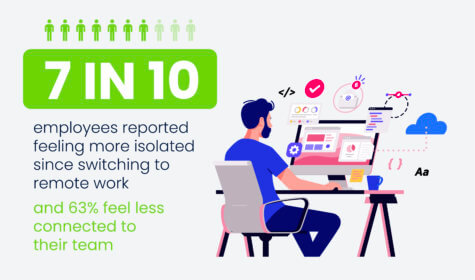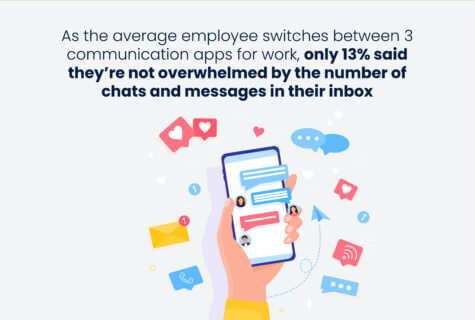NEW YORK — More than a year after switching to remote work, seven in 10 employees are feeling more isolated, compared to being in the office. That’s according to a recent survey of 2,000 work-from-home Americans, which explored the social impact of being away from the workplace for over a year.
 Many reported missing simple things such as face-to-face meetings (39%), office celebrations (35%), and after-work happy hours (34%). It hasn’t been any easier for people who have recently started a remote position. A mere four percent of new hires feel the virtual onboarding process was easy, compared to in-person training. Others attributed this to not knowing how to connect with their colleagues.
Many reported missing simple things such as face-to-face meetings (39%), office celebrations (35%), and after-work happy hours (34%). It hasn’t been any easier for people who have recently started a remote position. A mere four percent of new hires feel the virtual onboarding process was easy, compared to in-person training. Others attributed this to not knowing how to connect with their colleagues.
Conducted by OnePoll on behalf of Volley, the survey also found 63 percent felt less engaged with their team, as the average employee felt disconnected by August 2020.
Eventual return to office may be awkward, uncomfortable
Only 14 percent of respondents say they’re more confident when it comes to socializing with their colleagues. About the same number (16%) believe sudden in-office gatherings wouldn’t be awkward, as 82 percent of respondents who would find it uncomfortable have avoided attending them solely for that reason.
Additionally, two-thirds work directly with someone who they wouldn’t be able to pick out of a lineup and recognize by name only.
So how can teams address this? Three in five find something lacking in the quality of communication with their co-workers and 77 percent agree better communication leads to better work culture.
“The two main challenges with remote work are lack of communication and loneliness,” says Josh Little, Founder & CEO of Volley, in a statement. “We hear those concerns every day. It’s why people go searching for a solution like Volley — to improve communication and increase connection.”
Work from home difficulties
 As the average employee switches between three work communication tools throughout their day, only 13 percent don’t feel overwhelmed by the number of messages in their inbox. More than three in five (64%) find chat and email communication more difficult than face-to-face meetings, as 72 percent believe it’s not only what you say, but how you say it that matters.
As the average employee switches between three work communication tools throughout their day, only 13 percent don’t feel overwhelmed by the number of messages in their inbox. More than three in five (64%) find chat and email communication more difficult than face-to-face meetings, as 72 percent believe it’s not only what you say, but how you say it that matters.
Though nearly all workers (91%) retype messages and emails for clarity at least once a day, 87 percent experience miscommunications weekly and nearly half (47%) say this occurs four or more times every week. While dealing with the challenges of chatting and emailing, only 15 percent have seen their time spent in meetings decrease during the pandemic.
In fact, more than seven in 10 (73%) default to video calls whenever they’re looking to communicate something important.
“The data shows that the existing communication tools aren’t cutting it,” Little adds. “They were built for an old world with different needs. Today’s teams need a new way to communicate that gives them the richness of face-to-face interaction in an asynchronous format.”
